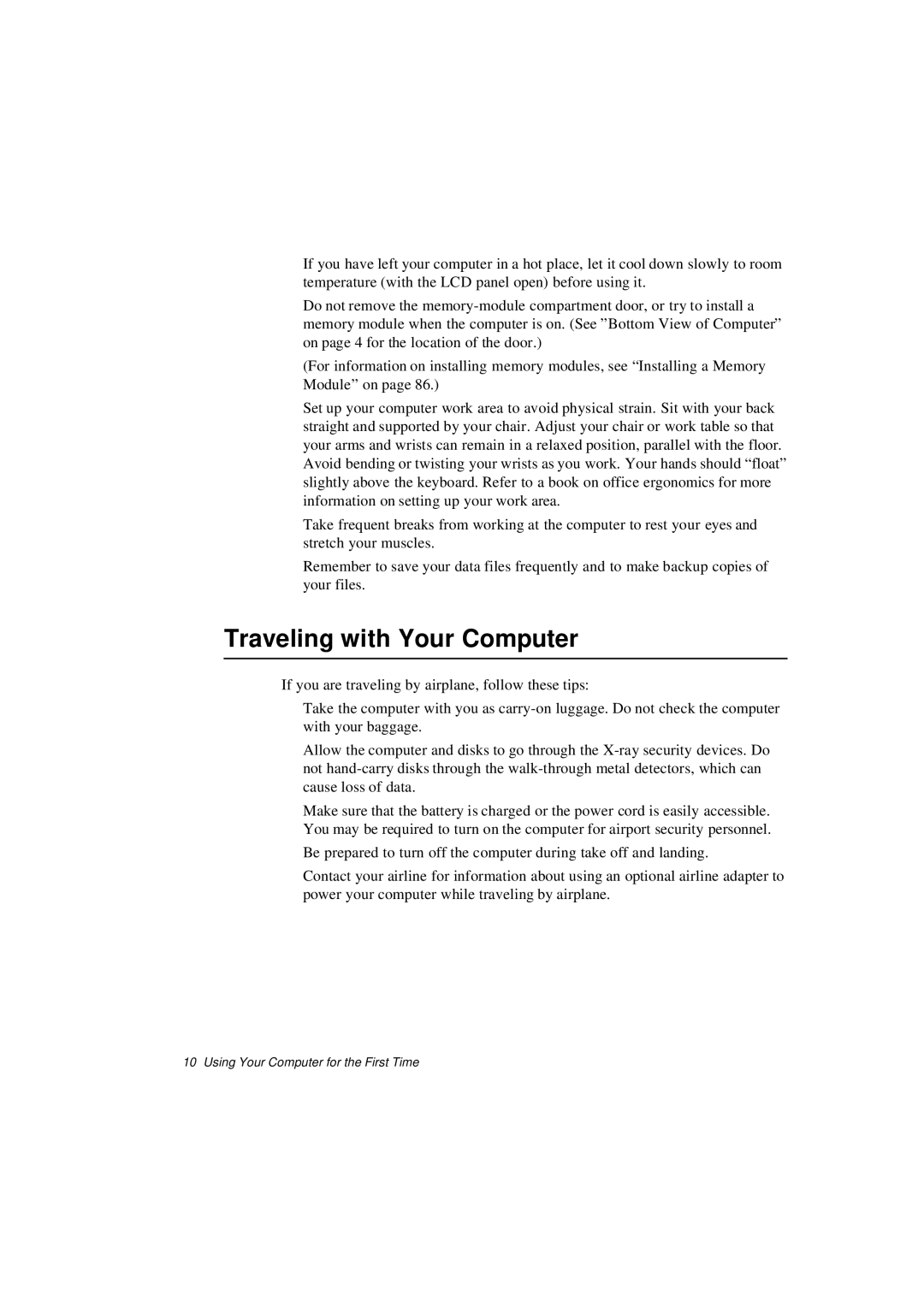If you have left your computer in a hot place, let it cool down slowly to room temperature (with the LCD panel open) before using it.
•Do not remove the
(For information on installing memory modules, see “Installing a Memory Module” on page 86.)
•Set up your computer work area to avoid physical strain. Sit with your back straight and supported by your chair. Adjust your chair or work table so that your arms and wrists can remain in a relaxed position, parallel with the floor. Avoid bending or twisting your wrists as you work. Your hands should “float” slightly above the keyboard. Refer to a book on office ergonomics for more information on setting up your work area.
•Take frequent breaks from working at the computer to rest your eyes and stretch your muscles.
•Remember to save your data files frequently and to make backup copies of your files.
Traveling with Your Computer
If you are traveling by airplane, follow these tips:
•Take the computer with you as
•Allow the computer and disks to go through the
•Make sure that the battery is charged or the power cord is easily accessible. You may be required to turn on the computer for airport security personnel.
•Be prepared to turn off the computer during take off and landing.
•Contact your airline for information about using an optional airline adapter to power your computer while traveling by airplane.
10 Using Your Computer for the First Time
